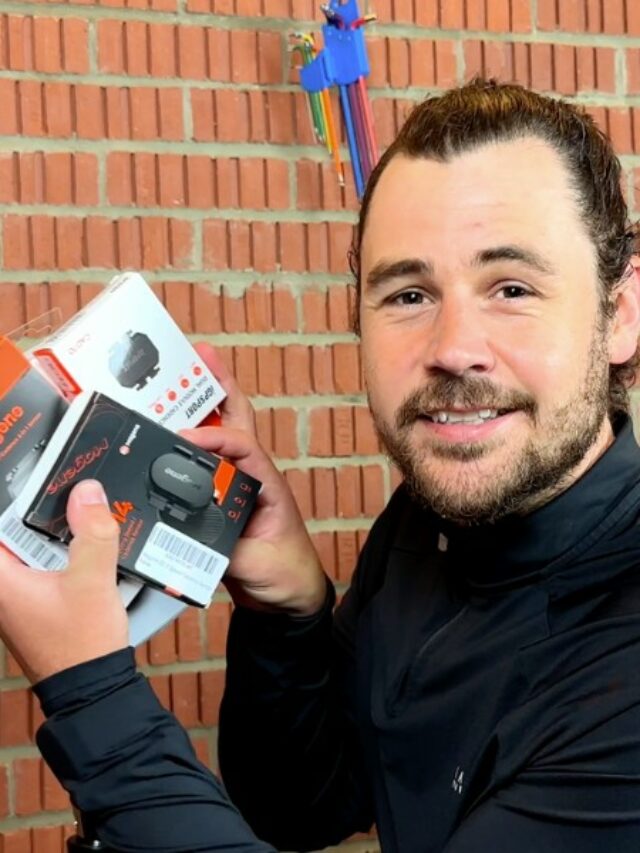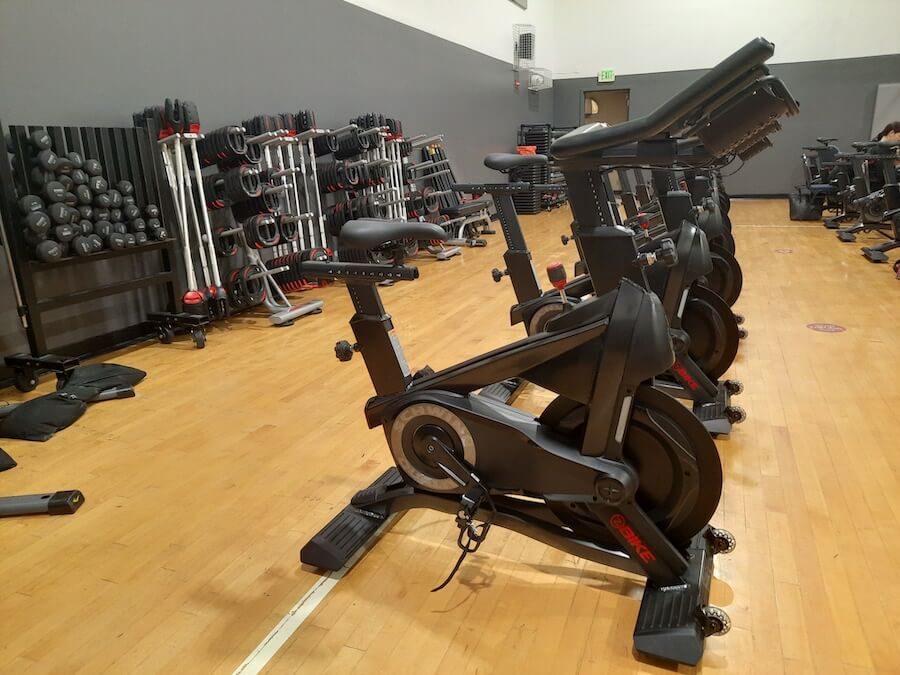
CPT & Indoor Cycling Instructor
Indoor cycling is a lot of fun and comes with some amazing benefits. In the past decade, it has become incredibly popular, and the sales of indoor bikes have gone through the roof. You no longer have to hit the gym and hope for a place on a spinning
At Girl
Understanding the pedal stroke
Before we start, it’s important to understand the pedal stroke. Although it may feel natural, it’s very complex for a body to learn the motion. In a pedal stroke, many muscles are involved, and the timing of how they fire is essential to creating the perfect movement.
There’s a common saying, “it takes years to grow cycling legs” This is a statement made by old-school cyclists, and it holds a huge amount of truth. You can have the strongest legs, but pedaling efficiency takes lots of practice, and the body can take years to mimic the motion of a professional cyclist perfectly.

Different muscles get used at different times to achieve the perfect pedal stroke. Knowing you could be doing more than one single revolution per second or more means it all has to be perfect. A huge amount of muscles play a part in a pedal stroke. Let’s speak about them next.
Muscles involved in a Pedal Stroke
Now let’s speak about the muscles involved when it comes to indoor cycling. There are a lot of different muscles, so to keep it simple, we have broken it down into groups of muscles. Here’s what we’re looking at;
Gluteus Maximus
The Gluteus Maximus, also known as the glutes, is the biggest muscle in the body. They play a huge part when it comes to supporting the back and connecting the muscles on the upper and lower side of the body. It has the ability to produce a huge amount of force and is a vital part of the pedal stroke.
If you imagine the pedal stroke as a clock, the glutes activate between 12 o’clock and 4 o’clock. It’s the driving force of the downward action. So when these engage, you’re at the top of the pedal stroke, and your leg is pushing down, bearing your own weight.
If you want to maximize the use of the glutes, then you need to focus on forcing the legs directly down and giving the glute the ability to engage fully. This could come in the form of a standing climb without leaning too far forward.
Quadriceps
The Quadriceps, often referred to as the quads, sit at the front of the legs. The Quadriceps are made up of a few different muscles. When it comes to cycling you generally focus on Vastus Medialis, Rectus Femoris, and Vastus Lateralis.
Imagining the pedal stroke as a clock again. You have your Rectus Femoris kicking in at 9 o’clock, followed by the Vastus Medialis and Vastus Lateralis at 11 o’clock. They all lose engagement around 3 o’clock. These are the first muscles to engage and lead the way for other leg muscles.
If you want to maximize the use of the quads, then you should get in a seated climb and low cadence leaning forward. You should feel the front of the legs tighten, and the pressure really builds up in them.
Hamstrings
The Hamstrings are a set of muscles on the back of the legs. They are made up of multiple muscles, but the main two you will find helping you pedal a
Again if you imagine the pedal stroke as a clock face, then you will find the hamstrings kicking in much later. They start around 2 o’clock and finish around 7 o’clock. These are the muscles that finish the pedal stroke and set up the quads for firing again.
If you want to engage your hamstrings more then sitting up taller and focusing on the end of the pedal stroke will go a long way. It can be easy to target the front, but you really have to feel the engagement in the rear.
Calves
Then we have the Calves. The Calves sit on the back on the legs below the knee. When it comes to cycling, there are three muscles that get a lot of engagement, the Gastrocnemius Medialis, Gastrocnemius Lateralis, and the Soleus.
Looking at the pedal stroke as a clock, these muscles will engage from 2 o’clock to 7 o’clock. These follow a similar engagement pattern to the Hamstring muscles. They are on the later end of the pedal stroke but don’t produce as much power as the other groups of muscles.
If you want to engage the calves more, the best way to do this is to focus on planting the toes further into the pedal stroke. You will feel the calves engage more and the back of the lower legs will feel more tension.
Tibialis Interior
Finally, we come to the Tibialis Interior. This is one of the smallest muscles as far as cycling goes and sits in the lower leg at the front. Although very small, it has a very important job, and cycling would be challenging without it.
The Tibialis Interior starts its engagement at 9 o’clock and ends around 2 o’clock. Its function is to help you pull the foot back to the top of the pedal stroke. Although small it is vital to the pedal stroke.
If you want to maximize the engagement of the Tibialis Interior then you will need clip-in pedals. Using heavy resistance and pulling the pedal up will help train this muscle.
All the others
If we were to list all the muscles involved when it comes to cycling, this would be a very long article. Many other muscles get used secondary to support the above muscles. Muscles such as the abdominals in the core, Latissimus Dorsi in the back, and even the triceps in the arms.
Importance of muscle activation
A very common issue when it comes to cycling is you start to favor certain muscles. I find myself very dominant to the quads as these are where a lot of the strength for my pedal stroke comes from.
This is where muscle activation comes into play. In my training, I look to focus on activating the Hamstrings and Calves. I have to activate these muscles to ensure they get trained so they can become stronger and help me become a better cyclist.
Muscle activation can be done on the
What is strength training?
Strength training can be done anywhere but is typically seen in the gym more than anywhere else. Many refer to it as bodybuilding, strength and conditioning, or even strength training. Using equipment and machines, you can isolate certain muscles to ensure they get the proper load and get stronger.
Great exercises to target the cycling muscle groups
There’s a huge amount of exercises that are amazing when it comes to strengthening the cycling muscles. Here are some of our favorites targeting all or a lot of the muscles cycling.
When it comes to doing any exercises, we recommend speaking to a professional to ensure you are doing them properly.
The Squat
The squat is one of the best exercises when it comes to using multiple muscles at one time. You use the hamstrings, glutes, quads, and even the calves. It’s not just great for building strength but also helps with flexibility in the ankles and lower back.
To do a squat, you start by standing roughly shoulder width apart. Then keep your back straight and bend your knees to lower yourself down toward the floor. Take yourself until your knees are roughly 90 degrees or further if you have the flexibility. Hold for a second, then return to the top again.
The Lunge
A lunge is an excellent exercise when it comes to isolating legs singularly to train them. It’s a great way to work on stability and quickly improve strength. It’s a very natural exercise compared to a squat.
To perform a lunge, you will want to take a big step forward with either foot and get your balance. Lower the knee on the opposite side until it just hovers above the floor while keeping your back straight. Then on that front foot, push off then switch sides to ensure even activation.
Straight Leg Deadlift
The deadlift is a very common exercise many people use to target the rear of the legs, particularly the hamstrings. It’s a great way to improve flexibility and improve the hamstrings, which can easily get neglected when it comes to cycling.
Standing shoulder width apart, you will want to grab a weight such as a barbell or some dumbbells. Keeping your back straight and shoulder back, lean forward, holding the weight out in front of your legs. Go till you feel the back of your legs tighten up, then return back to where you started.
Different types of muscle fiber
Another very important thing to mention is muscle fiber comes in different types, and this can be trained. When it comes to people training for specific goals, they will train muscles to suit them.
Type One
The first muscle type we will speak about is type one muscle fibers. This is what you will see in long-distance cyclists and runners. Often referred to as slow-twitch muscle fibers. These muscle fibers work slowly and efficiently. They take a very long time to fatigue and are perfect for endurance sports that can last for hours.
Type Two A
Type two A muscle fibers are known as fast twitch oxidative. These muscle fibers are commonly seen in 400m or 800m runners. They work much faster than type one but fatigue much quicker. Typically you will only be able to use these muscles to their maximum capacity for literally minutes.
Type Two B
Finally, we have type two B. These are known as fast twitch glycolytic. They are perfect for sprinters but fatigue extremely quickly. You will literally only get a burst of energy for about 30 seconds from these muscles. Then you will need to recover.
How to train muscle types
If you want to train a certain muscle type, the best way to do that is to replicate how you want it to work. For example, endurance athletes who want to go long distances should be training slowly and controlled. Sprinters might want to do explosive exercises to help promote speed.
Do riding different stationary bikes use different muscles
Indoor bikes come in many different shapes and sizes. Although they all make you produce the same motion in the legs they can work different muscles. Here’s what you can expect from a few different types of bikes.
Spinning Bike / Indoor Cycle

The first type of
Typically spinning bikes have a fairly aggressive position. Not only does it require all the muscles in your legs, but you also need to make other considerations. A spinning
Typical Exercise Bike (Upright Bike )

The next
These bikes being more upright, require much less upper body strength. Although you need to stabilize your core, it doesn’t put you in an aggressive position like the spinning
Recumbent Bike
The recumbent bike is like an exercise
A recumbent
Air Bike
Finally, we have the air
The air
Last Words
Indoor cycling is a great way to stay in shape and does work a lot more muscles than people think. It also takes the body to time itself incredibly well to ensure that the pedal stroke is smooth and proper. Thanks for reading our article. If you enjoyed this, you might want to read about the indoor cycling benefits and disadvantages.
